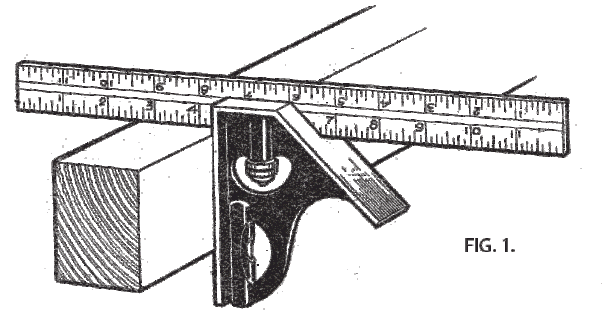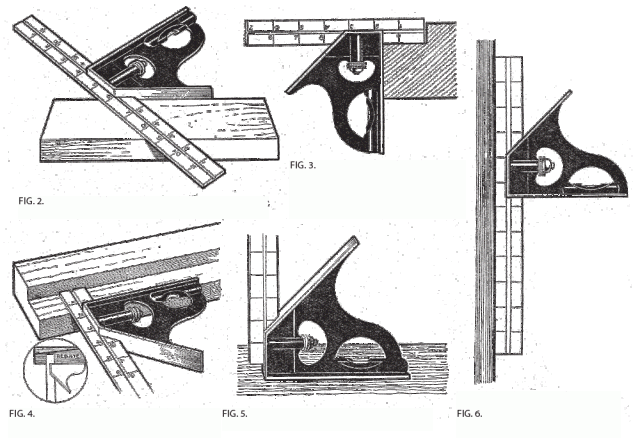
This is an excerpt from “The Woodworker: The Charles H. Hayward Years: Volume I” published by Lost Art Press.
This type of square was produced originally for engineers, but woodworkers have come to realise that it can be very handy to them. Of course the high precision tool needed for engineering is extremely expensive, but a low cost square of sufficient accuracy for woodwork is available, and this article deals with some of its advantages.
It will be seen that the blade of the square is separate from the stock, and is free to slide to give any required amount of projection. It is fixed by means of the small thumb screw. The advantage of this is that it becomes two squares in one. Every practical man knows that, whereas the 12 in. square is necessary for larger work, the 6 in. size is handier for general bench work. Thus, in the ordinary way the square is used with about 6 in. projection as in Fig. 1. When wanted for larger jobs it is merely a matter of sliding it along.

It can be used equally well for mitres as shown in Fig. 2. For this it has not the same usefulness as the set mitre because it can be used for the acute angle only, not the obtuse one, but it is suitable for the majority of jobs.
Apart from its general bench handiness, however, it can be used for purposes for which the ordinary square would be useless. Suppose you have to work a large rebate. How would you test it to see that it is square? The ordinary square could not be used because the blade projects too far. By giving the blade of the engineer’s square projection slightly less than the rebate width it can be used to test as shown in Fig. 3. In the same way if lines have to be squared across a rebate the square can be used as shown in Fig. 4. The advantage is that the butt of the square rests on the edge of the wood, not the bottom of the rebate. It might be that the rebate is tapered, and in this case the only way of marking a square line would be to work from the edge, not the rebate. This is made clear in Fig. 4 (inset).
The square can be obtained with or without a spirit level. Fig. 5 shows it in use to test a horizontal surface. The blade is either pushed in level or withdrawn entirely. For testing the vertically of a post or whatever it might be the square is held as in Fig. 6, the blade resting against the post. As a still further use, the blade of the square is marked out as a rule.
— Meghan B.